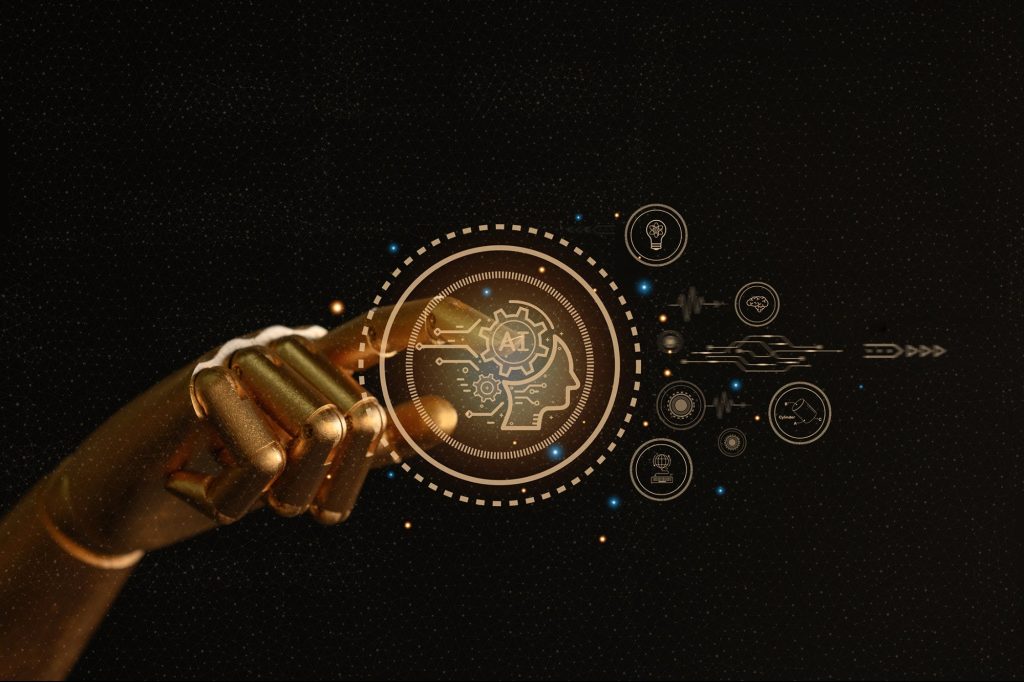As someone who is a huge tech enthusiast, I have been privileged to witness the continuous evolution of technology throughout my career. From groundbreaking innovations like the iPhone to cutting-edge advancements like 5G, the pace at which our world changes never ceases to amaze me. However, amidst this ever-changing landscape, one particular technology has captured my attention and sparked my curiosity: generative artificial intelligence (AI).
Generative AI, at its core, is a remarkable fusion of human ingenuity and machine learning. Its capacity to go beyond our preconceived limits and generate, imagine and produce is truly awe-inspiring. As someone who has always been captivated by the transformative potential of AI in various industries, encountering generative AI took my fascination to an entirely new level.
When I first witnessed the capabilities of generative AI, I was left in awe. It’s almost as if the AI possesses its own inherent creative instincts, blurring the boundaries between the realms of human imagination and machine intelligence. While the notion of machines creating art, music, or writing that can rival human creativity might appear daunting to some, with fears of the automation apocalypse rampant, I think otherwise.
In the 2023 edition of its annual Future of Jobs Report, the World Economic Forum reports that out of the 803 businesses that it surveyed from around the world, 25% believe that the integration of AI tech will lead to job losses, while 50% believe that it will create job growth. AI can only replace humans if you think it will and stop progressing and upskilling alongside it.
The potential for AI to push the boundaries of what we thought was possible is truly inspiring, and that can be illustrated in the way that it can reimagine the 9-to-5 workday.
Related: Why Are So Many Companies Afraid of Generative AI?
Reimagining the 9-to-5 workday
The traditional 9-to-5 work schedule has long been the standard in the corporate world, but with the rapid advancements in artificial intelligence (AI), the concept of “clocking in” and “clocking out” is undergoing a profound transformation. AI technologies are revolutionizing work, allowing flexibility, personalized schedules and reimagining the traditional workday.
Every position within every organization holds the potential for reinvention. Accenture conducted a manual assessment of 200 language-related tasks to gauge the impact of generative AI. The aim was to identify which tasks were more likely to be automated or augmented through AI. The results showed that generative AI is projected to influence approximately 40% of individuals’ working hours.
In this article, we will explore how AI is reshaping the 9-to-5 paradigm and empowering individuals to “flex out” of rigid work schedules
Related: How ChatGPT and Generative AI Can Transform the Way You Run Your Business
Embracing flexibility
Within any given role, generative AI will help automate certain tasks while others will be assisted, freeing up individuals to focus on more meaningful endeavors. Rather than being bound by inflexible schedules, workers now have the chance to embrace flexible work setups that cater to their personal preferences and productivity patterns. Companies can optimize workflows, automate repetitive tasks and streamline processes, increasing employee flexibility.
Additionally, there will be tasks that remain unaffected by the technology. The advent of generative AI will also usher in many new responsibilities for human workers, such as ensuring the responsible and accurate utilization of new AI-powered systems. This contributes to creating new job roles like AI system managers, AI ethics experts and prompt engineers.
The rise of remote work
AI has also played a crucial role in facilitating the surge of remote work, granting individuals the freedom to work from any corner of the globe. The advancements in communication and collaboration technologies, combined with AI-driven virtual meeting platforms, have simplified the process of remote collaboration for professionals.
The flexibility offered by AI-powered remote work helps eliminate the need for lengthy commutes, reduces overhead costs for companies, and expands opportunities for individuals in remote locations. Moreover, AI-enabled remote work allows organizations to tap into a global talent pool, accessing a diverse range of skill sets and perspectives that can fuel innovation and foster growth.
Related: How The AI Revolution Is Liberating Workers from the Office
Redefining work-life balance
The conventional 9-to-5 work model frequently falls short when it comes to striking a healthy work-life balance. AI is helping reshape this paradigm, granting individuals the liberty to manage their time in a manner that aligns with their personal obligations and outside responsibilities. Nobel Prize-winning economist Christopher Pissarides believes that AI can enable humans to work just four days a week.
With the aid of AI, flexible work schedules empower individuals to allocate dedicated time to personal endeavors like quality family moments, pursuing hobbies, or prioritizing self-care activities. By nurturing a more harmonious work-life balance, AI isn’t just bolstering employee satisfaction and well-being but also improving productivity and overall job performance.
A flexible and personalized approach to the 9-to-5 workday
With the continuous advancement of AI, the inflexible 9-to-5 work model is gradually being replaced by a more adaptable and personalized approach. Professionals now have the chance to break free from the confines of the traditional workday structure.
Embracing this transformation facilitated by AI can result in heightened productivity, increased job satisfaction, and a more balanced and fulfilling work-life equilibrium. As we progress, it becomes crucial for individuals and organizations to harness the potential of AI to reshape work hours and unlock the full capabilities of the modern workforce.
Related: It’s Time to Prepare for the Algorithmic Workforce
Read the full article here










